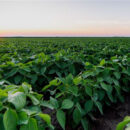FNC News
2026 Farm Input Outlook
Crop input costs for 2026 are projected to show a slight increase compared to 2025. The primary drivers are higher fertilizer prices—especially nitrogen—along with modest increases in chemicals, financing costs, equipment, and labor. Seed, fuel and land costs are expected to remain flat with little to no change. The following is an explanation of these expenses:
Fertilizer prices range from 10-15% higher than in 2025 and will be quite different in different regions of the US. This is driven by world demand, production and tariffs.
Chemicals are expected to see a slight increase for 2026.
Equipment and labor costs are expected to increase slightly, driven by increased machinery repair expenses and higher living costs impacting labor.
Crop insurance expenses are expected to remain flat, based on current commodity price projections for next year.
Interest rates have declined somewhat, and further reductions are anticipated in 2026. However, farmers are likely to require greater credit needs for the upcoming season.
Seed and fuel costs are expected to remain stable compared to 2025.
Land rents are holding firm as compared to 2025. This is due to demand for land along with values holding firm so far this fall. Commodity prices suggest that both land values and rental rates could have declined over the past two years; however, the market indicates that most areas remain consistent with 2024 and 2025 rates.
The Big Beautiful Bill signed into law on July 4, 2025, includes a new six-year Farm Bill (2026-2031) with much higher support prices than previous bills. In addition, these higher support prices also apply to the 2025 season, though payments will not be issued until October 2026 for the 2025 farming season.
This information assumes no significant disruptions from weather or world events. Any major world or weather event could impact the supply of crop inputs, potentially altering costs and income projections for 2026.
Connect with your local Farmers National Company Farm Manager to discuss how these changes may impact your farm. Contact us today!
More News




